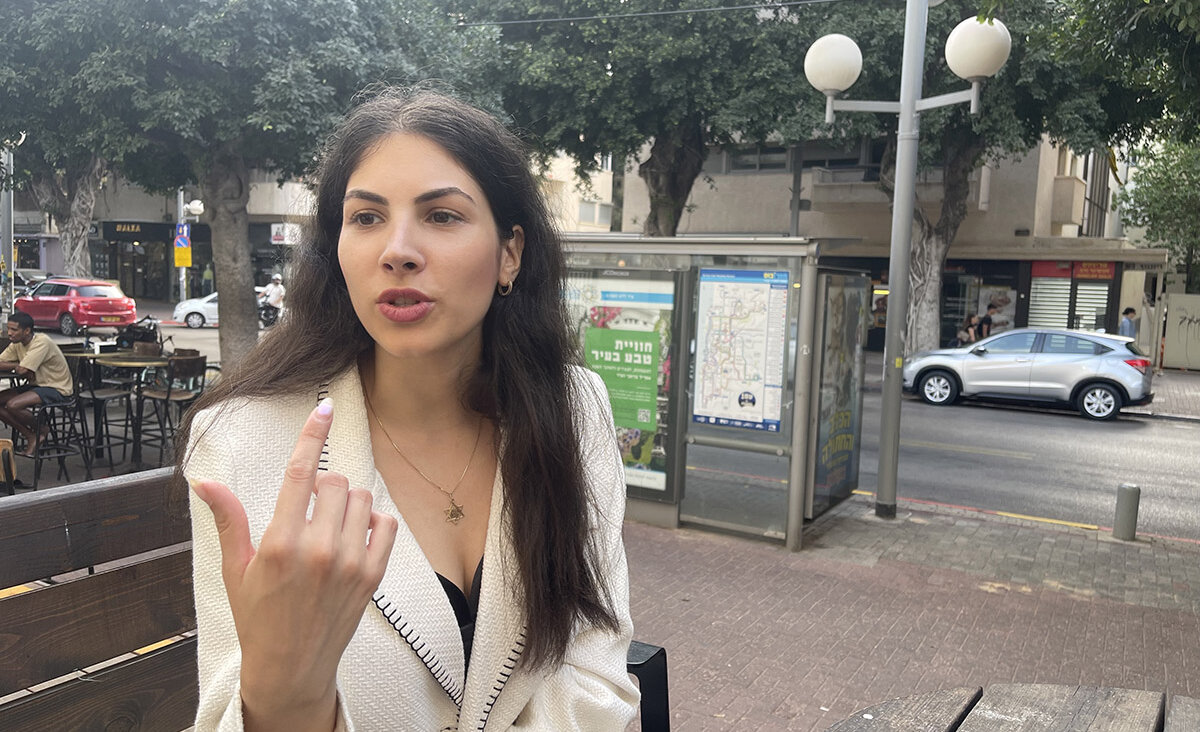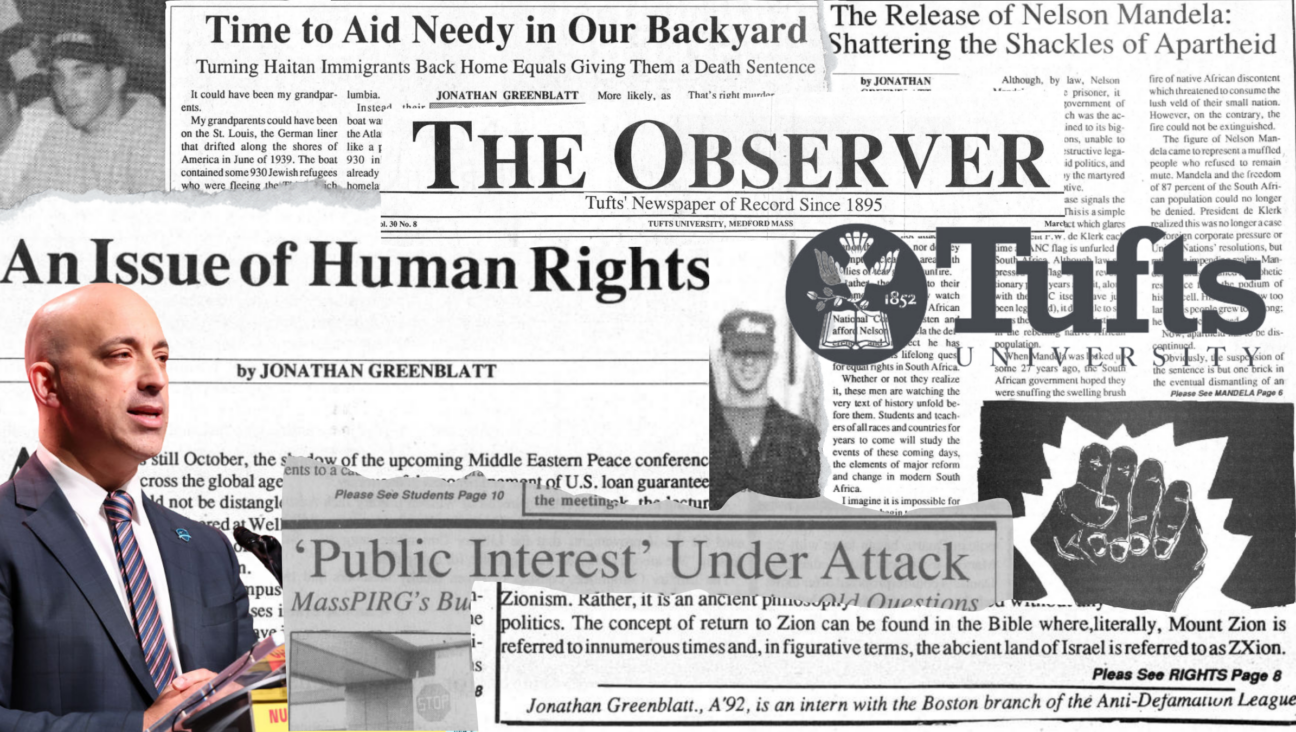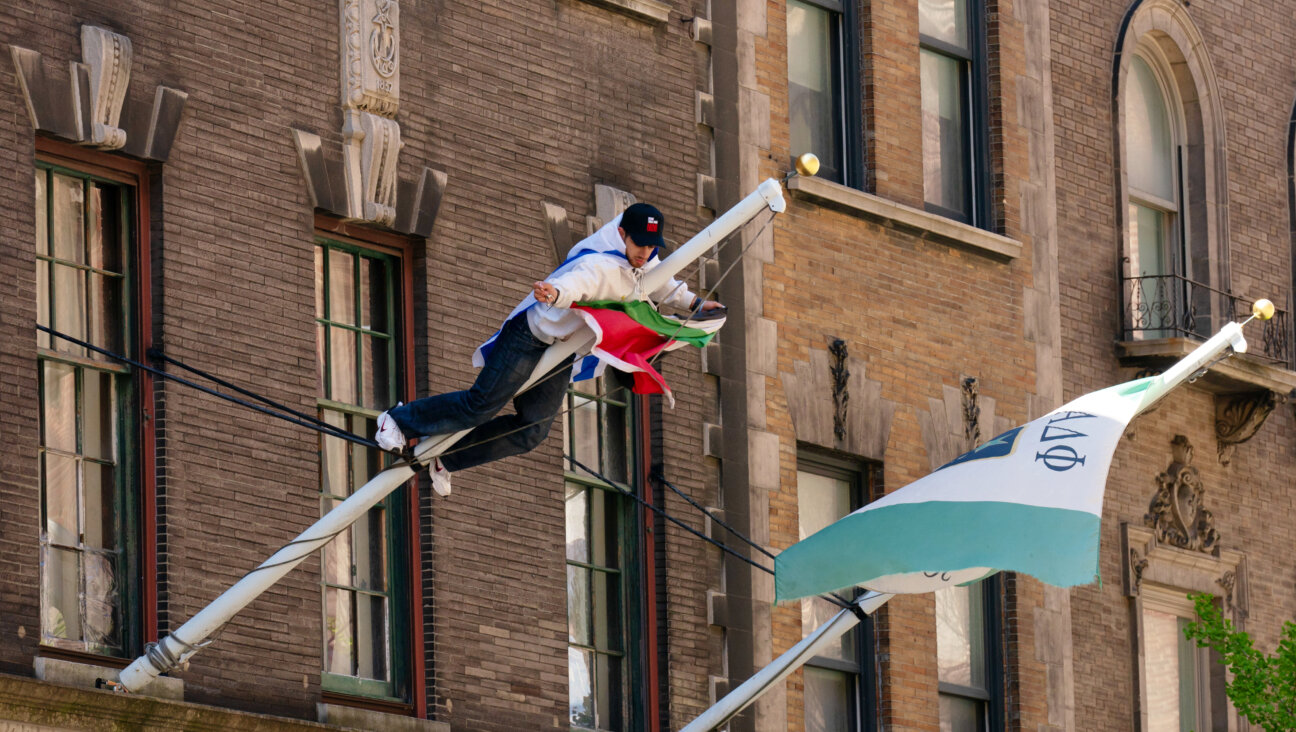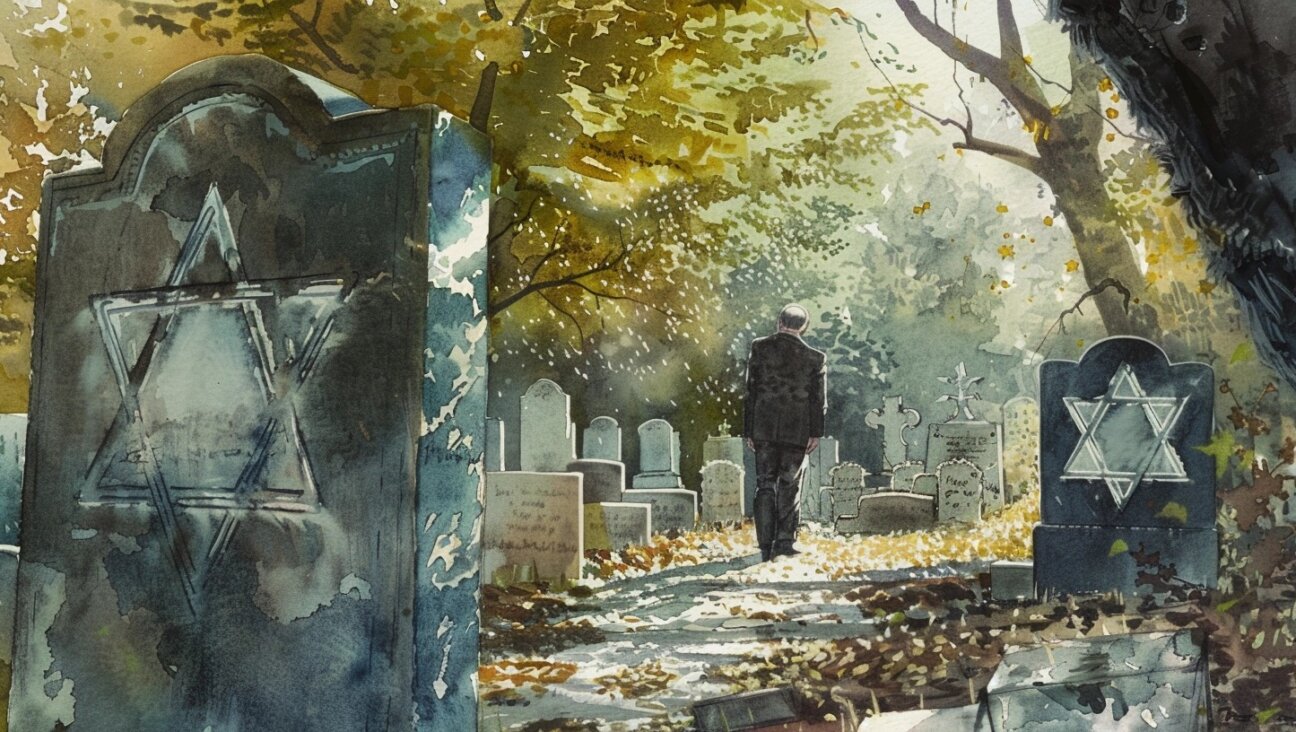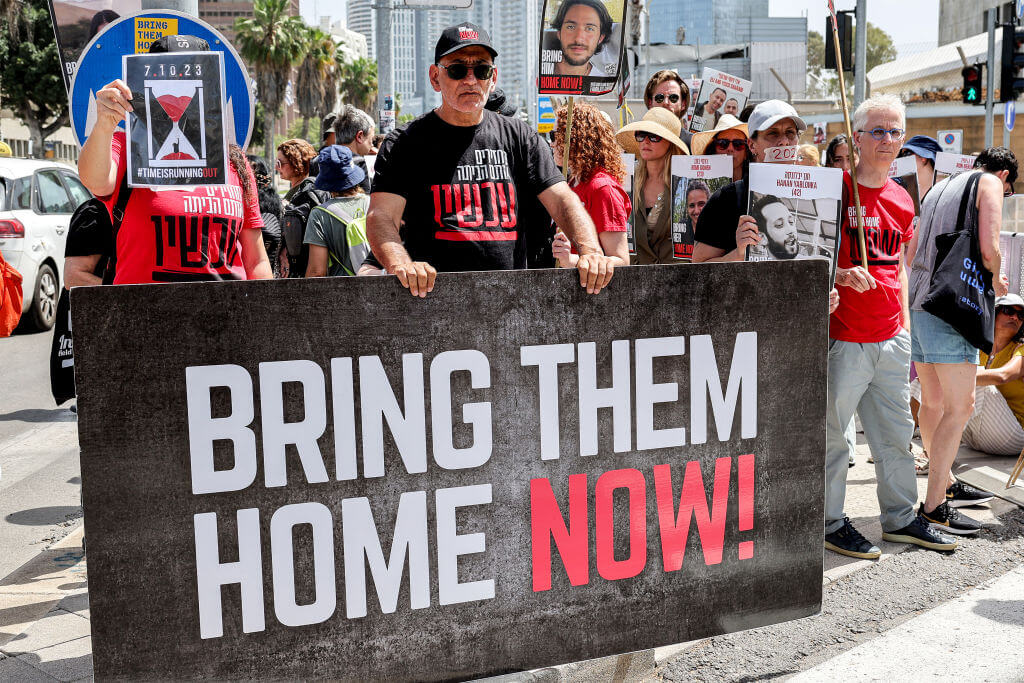Why Were 2 Homeless Men Found Dead at Brooklyn Jewish Elementary School?

Avenue T: The unassuming Sheepshead Bay building serves as an elementary school, food pantry, synagogue, and as a boarding house for needy men. Image by Josh Nathan-Kazis
Just after midnight at an Orthodox Jewish elementary school in Brooklyn, Elliott Gordon found a man turning blue on the floor of the chapel. Gordon had been sitting in a filthy dormitory room upstairs when he heard a voice in the hallway say that a man named Moshe had collapsed. It was Gordon’s first night at the school, where he was paying $150 a week to stay in a room stuffed with three beds. He had found two glasses of urine on the windowsill of the shared bedroom when he moved in that afternoon.
Gordon grabbed his phone and ran downstairs to investigate. Moshe was on his face in the tumbledown sanctuary, his body limp. Gordon called 911.
While EMTs worked to revive Moshe, another adult resident of the elementary school told Gordon that Moshe had a history of heroin addiction and had been passed out on the floor of the synagogue for nearly two hours. Gordon, unsettled, returned to bed, only to be woken again just after 6 a.m., when he heard more EMTs rushing through the halls.
Later, Gordon learned that two men had been taken to the hospital from the school building during the early hours of October 16: Moshe, who was in his 40s, and an 80-year-old man named Allan Shapiro, who police say suffered cardiac arrest. Both men had died.
“You’re talking two deaths at the same location within five hours,” Gordon said. “I said, ‘What the hell is going on here?’”
In the daytime, the building, on a quiet residential block on the corner of Brooklyn’s East 21st Street and Avenue T, is a small, coed Modern Orthodox elementary school. On Friday nights and Saturdays it is a synagogue. On Wednesdays it is a food pantry. And at all hours it is a mix between a homeless shelter and a boarding house, a place where adult men come and go as they please, and where some spend nights on chairs and on bathroom floors.
The two brothers who run the building, rabbis Abraham and Sroya Sorscher, served two months in federal prison in 2009 after admitting to defrauding a free lunch program for needy children. Instead of serving hot meals at the Avenue T school, prosecutors charged, the brothers had taken the money and fed students donated leftovers that made them sick.
Despite the brothers’ history, which also includes a 2007 guilty plea by Sroya Sorscher in state court in the Bronx to a misdemeanor charge of promoting gambling, no regulatory agency or Jewish charity has prevented them from caring for children and poor men in their disheveled facility. In fact, major Jewish charities, including the Metropolitan Council on Jewish Poverty and UJA-Federation of New York, continue to refer men to the Avenue T shelter.
When contacted by the Forward, neither organization appeared to be aware of the brothers’ past, or of the dual use of the building. Met Council admitted that no one currently on its staff had ever visited the shelter. UJA-Federation did not respond when asked repeatedly whether its staff had ever inspected the Avenue T facility. Yet both groups have sent desperate men to stay there: UJA-Federation has referred four people since 2012, and Met Council has referred two in the past two years.
Sroya Sorscher said that he saw no problem with housing homeless men in the same building as an elementary school. “I think that some people may feel that, you know, because somebody is poor, it doesn’t present a positive profile for children,” he said. “That argument is bizarre in my mind.”
Still, it is unusual for an elementary school to rent rooms to homeless men. Joshua Goldfein, a staff attorney for the Homeless Rights Project at The Legal Aid Society, said that he saw no inherent operational reason that a shelter and a school could not be co-located. “But it does make me wonder about whether there are any regulatory agencies that are reviewing these places,” Goldfein said. “The concern that I would have is that it’s not safe, and that no one’s figured it out because there’s no government agency that’s applying any standards to it.” Unlike day care centers, neither private elementary schools nor private shelters are inspected by the city’s Department of Health and Mental Hygiene.
“It sounds like there needs to be a more prudent review,” said Alan Schoor, CEO of Met Council. “Someone should be looking at the facility.”
The Sorscher brothers have been controversial figures operating on the outskirts of New York’s Jewish community for decades. In the mid-1980s they alienated local rabbis while running a small yeshiva in the Zerega section of the Bronx. David Edelstein, executive director of The Jewish Community Council of Pelham Parkway, said that Sroya Sorscher had angered one rabbi with vociferous demands for support for his yeshiva. “They were offensive to him,” Edelstein said. “They were much worse than rude.”

Unworried: Sroya Sorscher, one of the two brothers who run the school, deems concerns about the homeless boarding facility being in the same building ‘bizarre.’ Image by Getty Images
Still, Edelstein said that the Sorschers’ Bronx yeshiva sincerely helped some students, including one man who approached Edelstein last year and told him that the Sorschers’ school had “turned my life around.”
By 2000 the Sorscher brothers had focused their operations in the Sheepshead Bay area of Brooklyn, where they ran a synagogue and school at Beth Aaron Synagogue on Bragg Street, near Marine Park. On August 31 of that year, a fire tore through the synagogue. Abraham Sorscher told the New York Post at the time that he had heard rumors that the fire could have been started intentionally. The Forward could not obtain investigation records from the New York City Fire Department by press time. The Jewish community in that part of Sheepshead Bay had been in slow decline for years at the time of the fire. While it has since rebounded, the building remains empty.
It was shortly after the fire that the two brothers settled in at the Avenue T building. Sroya Sorscher was walking out the door of that building when this reporter arrived, unannounced, on November 10. “I have nothing to hide,” Sorscher said. “I will show you the whole building. I will show you everything we have.”
The building has gone by a bewildering variety of names under the Sorscher brothers: Yeshiva Gedolah Academy of Beth Aaron, Beth Aaron Synagogue, Ahavas Achim Congregation, Yeshiva Residence, Rabbi Jacob London Madison Community Center and the Yeshiva Academy, among others. The brothers’ names, too, are confounding: Their last name is spelled both “Sorcher” and “Sorscher”; Abraham seems to also use the name Mordecai, and many only know Sroya Sorscher as “Rabbi.” Sroya Sorscher declined to clarify his or his brother’s name.
Inside and out, the space is unkempt. During a later visit, on November 13, a large sack of onions lay abandoned on the ground just inside the front door; a fruit fly circled a box of discount cakes that sat in a hallway; crumbled cookies lay beneath a desk in the school’s cramped office. Food sat out on a table in the sanctuary throughout the day, and the flooring was lifting in places.
In the school’s tiny coed classrooms on the building’s first floor, young students greeted Sroya Sorscher happily, shouting “Hi, rabbi!” as he walked in. Older boys studied with Abraham Sorscher in the chapel where Gordon found Moshe, lifeless, on the floor. Students receiving private tutoring sat with their teachers behind temporary room dividers.
Sorscher said that the school had about 75 students; roughly half that number appeared to be in the building November 10.
When a state inspector knocked on the door of the school here in December 2000, she found just 15 children present. The Sorschers had claimed in paperwork that they were feeding 120 students with food and cash supplied by the federal National School Lunch Program. Subsequent investigation, according to court papers, determined that the “vast majority” of applications purportedly filled out by parents claiming that their children were eligible for government-subsidized lunches through the NSLP were fraudulent. When inspectors went back a month later, according to a document filed in the criminal case, they ended the visit early because they “felt that the defendants were threatening them.”

Worried: Elliot Gordon found two glasses of urine on the window sill of the room he stayed in, and a dead man downstairs. Image by josh nathan-kazis
Prosecutors claimed that the Sorschers had misused the NSLP funds intended to be used to buy lunches for their students, and that they had diverted deliveries of bulk NSLP food. Children at their school were served leftovers donated by a local deli. “Both students and parents complained to… agents that these reheated meals were often inedible, and on occasion, even made students sick,” prosecutors wrote in one court filing.
The brothers each pleaded guilty to NSLP fraud charges on the eve of trial. They were sentenced to two months in prison, three years of supervised release and a total of $75,000 in restitution, which they paid in June 2010. Abraham Sorscher, who had been employed by the New York City Department of Education since 1980, lost his job in 2010 as a result of his guilty plea. Asked about the NSLP case, Sroya Sorscher said, “It’s all resolved.”
The two floors of upstairs dormitories in the Avenue T building are separated from the elementary school by unlocked doors. On the third floor, Sroya Sorscher displayed two empty rooms, one of which had belonged to Moshe. A single bed stood in each of them.
“I would imagine he died of an overdose from painkillers,” Sorscher said of Moshe, whose surname he claimed not to know. He claimed that Moshe had been a wounded veteran of the Israel Defense Forces. The Office of Chief Medical Examiner confirmed the man’s death at the Avenue T synagogue and confirmed his first name, but would not provide his surname.
While the November 2014 certificate of occupancy on file with the Department of Buildings states that the upstairs floors will be used as dormitories for children, Sroya Sorscher said that adult men have been staying there for a decade. One floor had, at one time, housed high school students, Sorscher said, before the program switched its focus to elementary school. Complaints on file with the DOB about the space being used as a dormitory for adult men stretch back to 2010, with four separate complaints filed since 2014. The DOB does not appear to have taken any action.
Gordon said that the second floor room where he stayed was filthy. “They put me in a closet that had three beds,” he said. In addition to the urine on the windowsill, he found bedbugs in the beds, and broken fixtures in the bathrooms. One man slept in a shower during a portion of Gordon’s three-week stay, and two men slept on chairs in the downstairs synagogue.
“On the second floor there’s a stench. It’s dirty,” Gordon said. “It’s just absolute filth.”
When this reporter walked past the second floor with Sorscher, a man could be seen sleeping on a table in the hallway. “He likes air,” Sorscher explained.
Gordon said that some residents appeared to have mental health issues or alcohol dependencies. Hot meals provided for residents were left unattended on a table in the chapel for hours. Gordon smelled marijuana in the building in the evenings.
Sorscher said that the dormitory provided an alternative to the city shelter system. “This is not the Atlantic Avenue shelter here,” Sorscher said. “You’re not going to see God knows what types of people. These are Jewish people that, unfortunately, need a place, and, in a discreet way, they have a place.”
While Sorscher described the upstairs dormitories as “hachnasat orchim,” or an hospitality for guests, some residents described the housing, at least in part, as a business. Leibel Solkowitz, who said he has had a private room in the dormitory for four years, said that he pays $600 per month for his single room. “If you can’t afford it, you don’t get the room,” he said. “Either you can afford it or not. It’s not a charity.”
Still, Solkowitz is grateful to Sorscher, and praised him for allowing two men to sleep on chairs in the synagogue. “The rabbi is a saint,” he said. “He has a heart of gold.”
Gordon, a veteran of Rudy Giuliani’s mayoral administration who now works as a booking agent for motivational speakers, learned of the yeshiva dormitory through a classified advertisement in The Jewish Press, a Brooklyn Orthodox newspaper. Forced to leave his apartment, he planned to stay at the Avenue T building for a brief time while seeking new housing.
“I figured, I’ll try to find a bridge,” he said.
Gordon signed a three-page agreement with Ahavas Achim Congregation, paying $300 for two weeks in “Room 2 – Bed 3” on the second floor of 2102 Avenue T. He said that he didn’t look closely at the room before signing, and had put his things in storage before realizing how poor the conditions were inside the building. Gordon was shocked by the deaths of Shapiro and Moshe, and furious that Moshe had been allowed to lie on the floor of the synagogue for hours. He contacted police and the Forward soon after the incident.
“It may be an old building, it may not be 2015 here, but it’s certainly warm,” Sorscher said November 10. “In my wildest dreams to believe that any human being, that any Jew especially, would have anything but compassion and mercy and have a good feeling: ‘Ah, there’s a rabbi in the world that cares about a person.’”
After speaking with this reporter at length November 10, Sroya Sorscher proved elusive. Staff members in the school’s office said November 13 that he was unavailable but could be reached via telephone the following day. Seen outside the building moments later, Sorscher said that he had no time to speak. The next day and on subsequent days, no one answered at the number Sorscher had provided. The number had no answering machine.
In the midst of their legal trouble in the mid-2000s, the Sorscher brothers struck out on a bold adventure. In July 2005, three months before the federal indictment, they acquired a vacant middle school in the middle of the cornfields, three miles outside the tiny town of West Manchester, Ohio.
On paper, the property is owned by Beth Aaron Synagogue, the Sorschers’ Bragg Street synagogue, which still sits vacant. Today, the West Manchester school appears to be completely abandoned, too. Jeff Weireter, whose parents bought the vacant middle school after it closed and owned it until 2004, said that the school and the 10 acres on which it sits are now totally neglected. “The grass hasn’t been mowed in a year or two,” Weireter said.

A Death in the Chapel: The first floor worship area, where a man known only as 'Moshe' died on the night of October 26, doubles as a classroom during the day. Image by Josh Nathan-Kazis
Sroya Sorscher told the Forward that he and his brother had originally planned to build an out-of-town yeshiva there. “There was a rabbi at that time that was going to work with us in making an out-of-town dormitory school for kids, that it should be far away from civilization and more conducive to learning,” Sorscher said.
Whatever their intention, the building remained empty after their purchase, gathering graffiti. Then, a few hours before dawn on February 21, 2013, fire crews were called to the building as flames burst through the roof of the old gymnasium. Firefighters fought the blaze for nearly 12 hours.
Local press reports called the fire suspicious. A spokesperson for the Ohio State Fire Marshall told the Forward in October that the investigation into the fire is still open, though no leads are currently being worked and that no cause or origin had been determined.
“Of course it was suspicious,” Sroya Sorscher said. “They want to get rid of us. Not that we’re there. We’re not there. We have a caretaker that manages the grounds.”
But from Weireter’s perspective, if there is currently a caretaker for the property, “he needs to find another line of work.” Noting the property’s neglected state, Weireter said, “If that’s what he considers caretaking, it’s pretty sad.”
Sroya Sorscher said he did not know what the plans were for the West Manchester school.
Meanwhile, in the years in between the first visit by the state inspector to the Avenue T location and the federal indictment, other legal trouble found the Sorscher brothers: Both were indicted in New York State Supreme Court in the Bronx in 2004 for running bingo games for fake charities, though the charges against Abraham Sorscher were dropped.
According to a letter about the bingo case that federal prosecutors sent to the judge in the NSLP case, Sroya Sorscher was alleged to have obtained a license to run bingo games in support of “sham religious entities” and ran games out of a hall in the Bronx. Sroya Sorscher and three co-defendants pled guilty in 2007 to promoting gambling in the second degree.
Speaking at the cluttered office in the Avenue T building November 10, Sroya Sorscher dismissed the case as ancient history. He said that he had pleaded to the misdemeanor because he could not afford to fight the charges.
Sroya Sorscher said that the criminal cases against him were irrelevant to his current management of the school and shelter at the Avenue T building. He touted his referrals from major Jewish charities such as Met Council and UJA-Federation as evidence of his operation’s legitimacy. “They don’t owe me any good word or any bad word,” he said. But, he said, “They do know that if ever there is a Jewish man that needs a place, and it’s an emergency, that they call [me.]”
Sroya Sorscher said that reporting on his past brushes with the law, and on the current dual usage of the building, would damage his elementary school. “If you’re going to go and write up what happened to me 15 years ago, and the bingo, and the building, and how does it look, a building that has yeshiva children, has poor, destitute people upstairs, how do they interact, and then you start with the innuendo,” he said. “You’re going to end up being bashmutzing — you’re going to tarnish and bury the good name and reputation of the student body.”
Contact Josh Nathan-Kazis at [email protected] or on Twitter, @joshnathankazis

I hope you appreciated this article. Before you go, I’d like to ask you to please support the Forward’s award-winning journalism this Passover.
In this age of misinformation, our work is needed like never before. We report on the news that matters most to American Jews, driven by truth, not ideology.
At a time when newsrooms are closing or cutting back, the Forward has removed its paywall. That means for the first time in our 126-year history, Forward journalism is free to everyone, everywhere. With an ongoing war, rising antisemitism, and a flood of disinformation that may affect the upcoming election, we believe that free and open access to Jewish journalism is imperative.
Readers like you make it all possible. Right now, we’re in the middle of our Passover Pledge Drive and we still need 300 people to step up and make a gift to sustain our trustworthy, independent journalism.
Make a gift of any size and become a Forward member today. You’ll support our mission to tell the American Jewish story fully and fairly.
— Rachel Fishman Feddersen, Publisher and CEO
Join our mission to tell the Jewish story fully and fairly.
Only 300 more gifts needed by April 30








